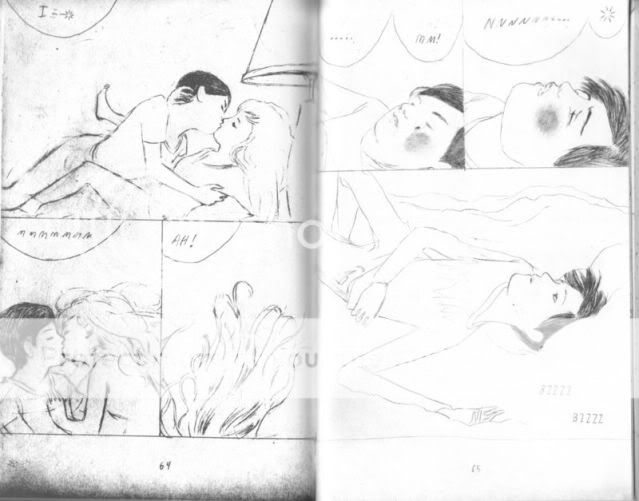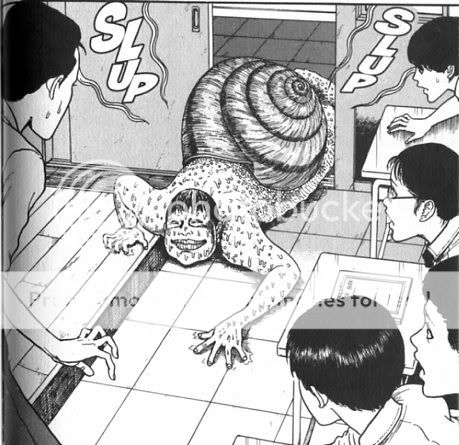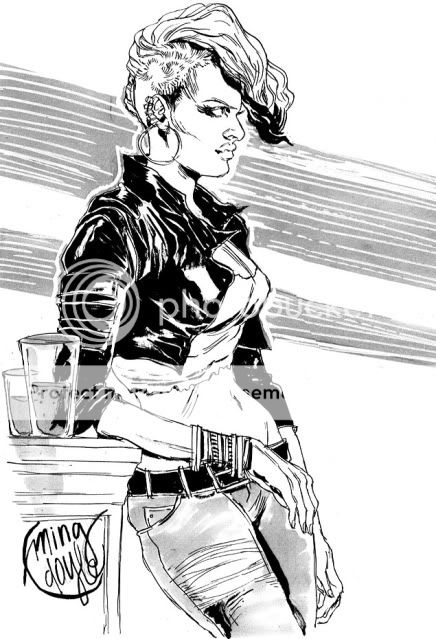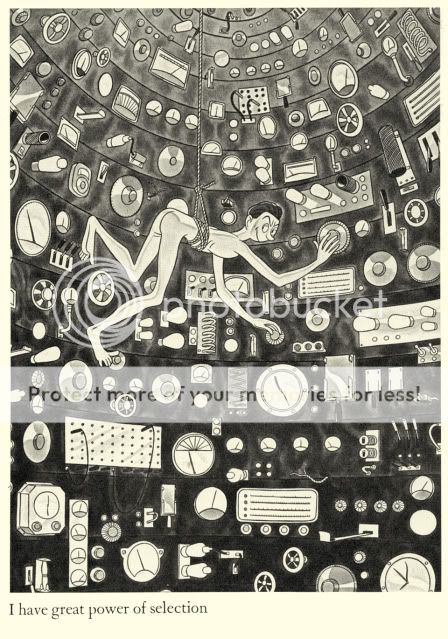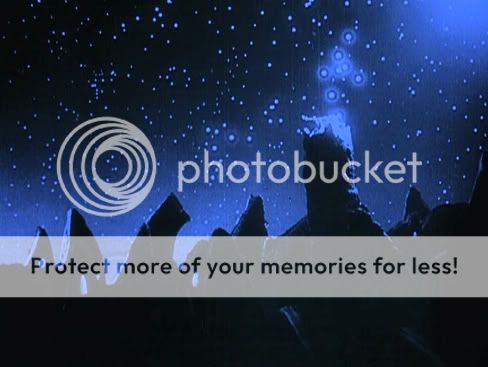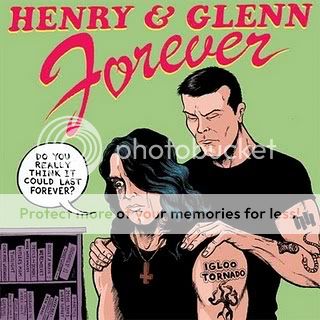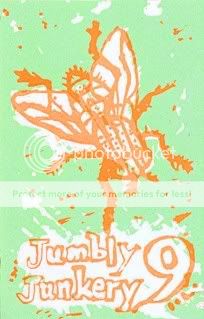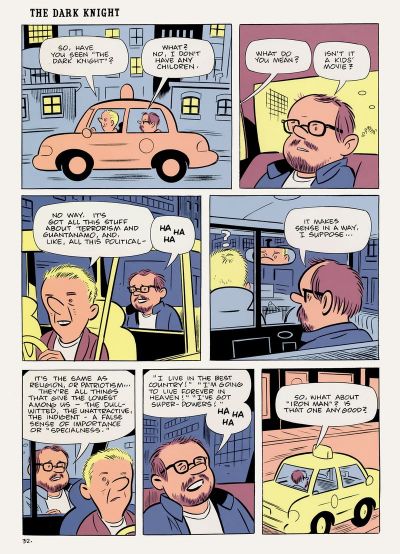I think that Chris Sims’s piece on “the racial politics of regressive storytelling”–by which he means the way that resurrecting the original versions of characters like Green Lantern, the Atom, the Legion of Super-Heroes and so on has the unintended but unavoidable effect of re-whitening these franchises–ignores a lot of important details and thus badly misdiagnoses the source of this problem. But I’ll start by pointing out its strengths: Yeah, you know what, it is weird that concepts like the Flash and the Legion are so nostalgic despite being literally about forward motion and the future, as Sims points out on his own blog (though I like Geoff Johns’s takes on those characters anyway). Also, this isn’t exactly news, but it is indeed silly the way so many ethnic characters have nationality-or-stereotype-based powers (though as Sims notes, that’s true of plenty of nominally “white” European characters as well–Banshee, anyone?). And in general, it’s certainly not healthy for the superhero genre to be so inward-looking; as Sims notes, we’re a long way from Frank Miller and Alan Moore, whose successes stemmed in part from bringing in outside influences and from their restless desire to do things that hadn’t been done with these characters and concepts before. Finally, Sims is quite right to point out the grotesque undercurrent of majoritarian whinging you occasionally detect from fans, marginalizing non-white characters like John Stewart as “Black Lantern” and bitching about Idris Elba and Michael Clarke Duncan getting cast in movies and so on.
But while Sims’s central argument can’t really be denied–obviously, replacing (say) the Asian-American Atom or African-American Firestorm with their Caucasian forerunners does indeed make the DC line-up that much whiter–I think blaming it, as he does, on blinkered and compulsive nostalgia-mongering is misleading.
First of all, I’ve always thought the “legacy” concept, by which older characters are replaced by younger ones who inherit their basic costume-and-power-set concept, is one of the weirdest and lamest things about superhero comics. If Lost introduced a new doctor character with short hair and daddy issues and called him Jack, would it be “galling” or “regressive” for the audience, or subsequent writers, to want to bring the original guy back? Perhaps once upon a time, in its original form, when then-defunct Golden Age characters were replaced by Silver Age characters who were like totally different things, giving an old character’s name to a new one was the sort of forward-thinking freshmaker that Douglas Wolk has argued it is. But that’s very different from the “legacy” concept we know today–as I’ve said before, they’re all about new characters’ compulsion to live up to their forebears, no more forward-thinking than my college buddy’s dad naming him William Howard Taft V.
Secondly, I’m frankly not convinced that very many of these characters are such great losses beyond the surface value of their, uh, surfaces. Ryan Choi and Jason Rusch, the most recent Atom and Firestorm, are the stars of canceled series with no evident fanbase. At any rate, they’re still around and useable, and in fact they’ve both starred in big-deal event comics lately (Ryan in Cry for Justice, Jason in the ongoing Brightest Day where he shares the Firestorm powers with his white forerunner Ronnie Raymond). I also think it’s a stretch for Sims to rope newer Flash Wally West into the argument because his wife is…Korean-American, I guess, though you’d never know it from looking at any of the pictures I’ve ever seen of her. Ditto newer Green Lantern Kyle Rayner, who apparently and hilariously was retconned into being Latino. If you have to cite Yolanda Montez to shore up your argument, you’re grasping. (“Who?” Exactly.) As for the Legion, even semi-seriously citing that green skins/blue skins/black skins line is indicative of how goofy this is. And the less said Sims’s likening of the creation of an alternate Earth for more recent iterations of old superhero concepts to “the unintentional building of a cosmic-scale meta-textual ghetto,” the better.
In a nutshell, I think Sims’s argument is DC-based by necessity, since that’s the universe where the most prominent non-white characters have tended to be revamps of preexisting superhero mantles previously held by white dudes. If you look at most of the better, longest-lasting, most prominent superheroes who aren’t white–Storm, Luke Cage, Black Panther–they’re their own thing, not substitutes for previous characters. To filter it through a more familiar lens, I think it’s widely accepted that superheroines are considered lame is that so many of them are obvious, borderline creepy knock-off versions of the male characters like She-Hulk, Spider-Woman. (I think Supergirl and Batgirl clicked because they’re more like sidekicks.) Again, the ones who really work–Wonder Woman, Jean Grey, the Invisible Woman, Storm again–tend to be their own thing.
Moreover, and contra the likes of the DC characters mentioned above, the big Marvel non-white characters are associated with influential, acclaimed runs by important creators: Storm’s from the Claremont/Cockrum/Byrne X-Men, Luke Cage was rescued from obscurity by peak-of-his-powers Brian Michael Bendis for Alias and then placed at the forefront of the company-defining New Avengers, Black Panther is a goddamn Lee/Kirby Fantastic Four castmember. I know plenty of ’90s-era comics readers who are fond of Kyle or Wally and his wife Linda, and there are any number of superhero blogs who could tell you how much they enjoyed the low-double-digit runs of the recent Blue Beetle or Firestorm comics, but we’re clearly on a different level here.
Now, I know that the “one true versions” of Green Lantern (Hal Jordan), the Flash (Barry Allen), the Atom (Ray Palmer) et al who have recently been resurrected were all themselves replacements for earlier superheroes with those names. But there were many other variables in play here. For starters, the previous holders of those titles were, for the most part, predecessors in name only: The concepts for the original Green Lantern and Atom were very different, for example. They’d also been pretty much out of commission for quite some time before their publishers decided to reinvigorate their IP by coming up with new characters for those monikers. As Franklin Harris notes, this means the earlier versions didn’t have to be killed off or otherwise forcibly marginalized to make room for their replacements, which isn’t true for guys like Hal and Barry and Ray; I’d imagine that Harris is right to say that this is the source of a lot of lingering desire to bring back the previous versions.
This is getting into personal preference now, but of the suite of non-white heroes currently flying around the DCU, I’m not surprised to discover that my favorites–though not originals like Storm and Cage and the Panther–tend not to follow the usual model of copycatting a previous template as closely as their shunted-to-the-side counterparts. African-American Green Lantern John Stewart works for the same reason that white Green Lantern Guy Gardner works: They fit in as fellow members of the Green Lantern Corps, a concept that can allow for multiple people with the same power set, rather than as direct replacements for a slain Hal Jordan as was the apparently Mexican-American Kyle Rayner. Steel shares a name with some previous DC hero I don’t have the first clue about, but he’s also a can’t-miss combination of Iron Man with Superman’s cape, Thor’s hammer, and an iconic African-American legend’s name (John Henry Irons = AWESOME secret identity), all of which I’m reasonably sure didn’t apply to the last guy. Jaime Reyes is a direct replacement of the previous, murdered Blue Beetle, yeah, but he’s so different in identity (suburban teenager vs. grown-man billionaire inventor) and power set (magic alien artifact vs. basic eccentric tech stuff) that he feels less like a sub and more like what Hal Jordan was to Alan Scott. Plus, he’s in a very popular cartoon series, which is really the bottom line: The characters with the most purchase in the minds of fans and in pop-culture at large tend to be the ones who win out in the end, which is why the Green Lantern who originated the modern concept and starred in decades of stories and Super Friends beats the Green Lantern who gave us “women in refrigerators,” the crab mask, and relative obscurity.
My point is that if you don’t like the whitening of the DCU as it’s playing out through the return of Silver Age whitebread heroes, don’t blame Geoff Johns’s Rebirth comics or the fans who buy them–blame the people who thought the best way to diversify the DCU was to stick new guys in the old guys’ laundry.

